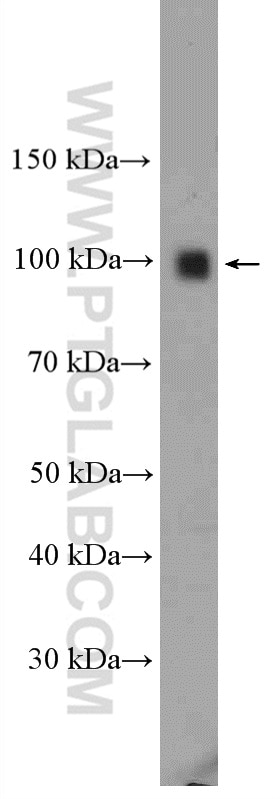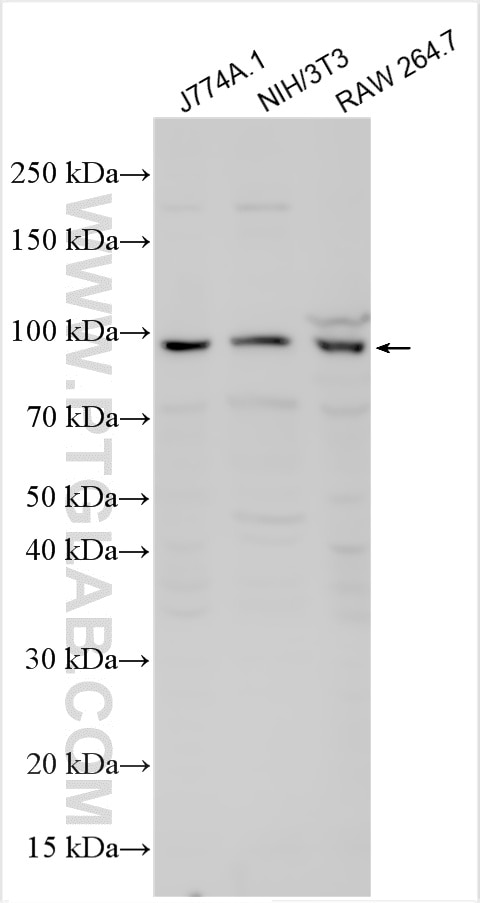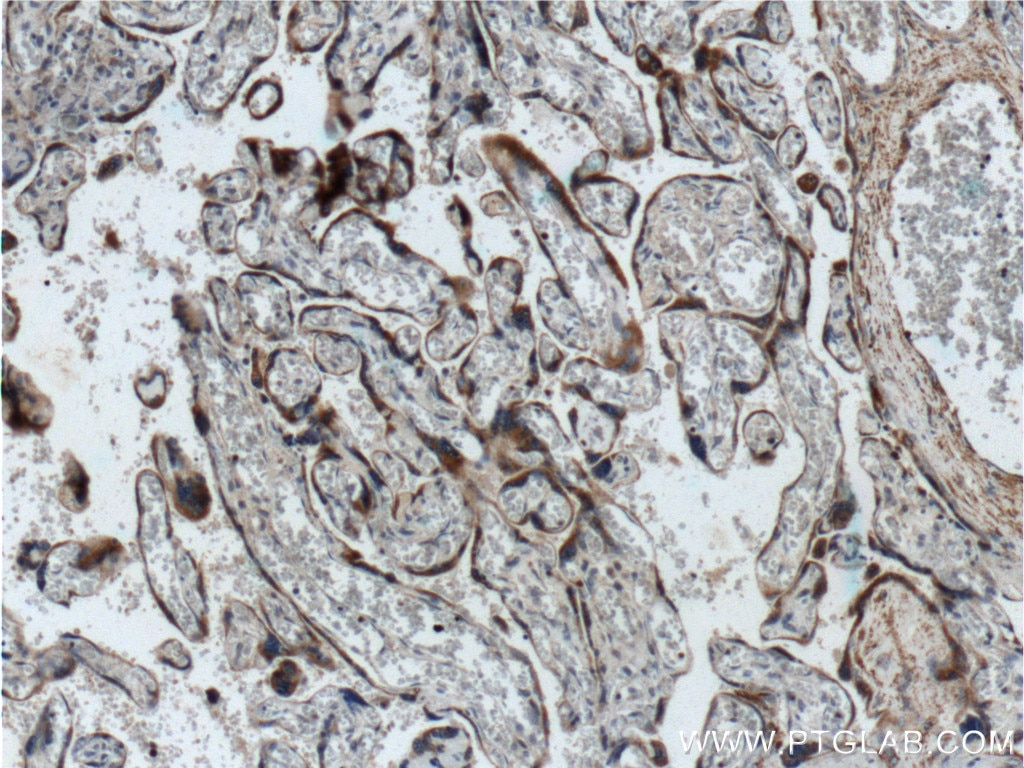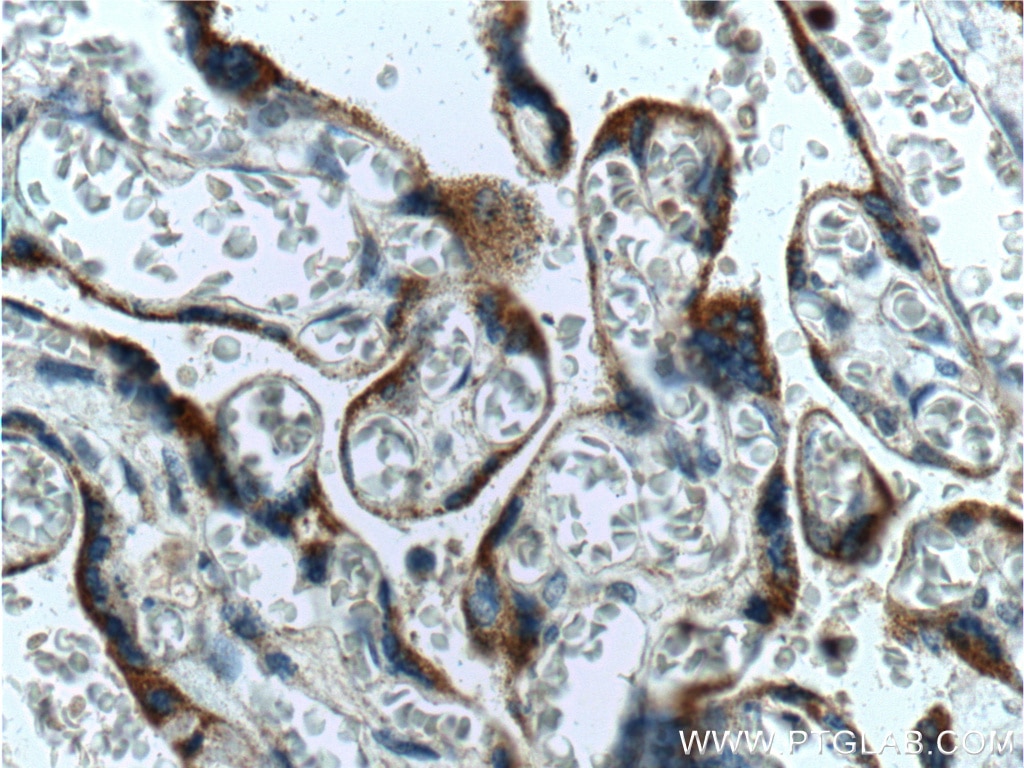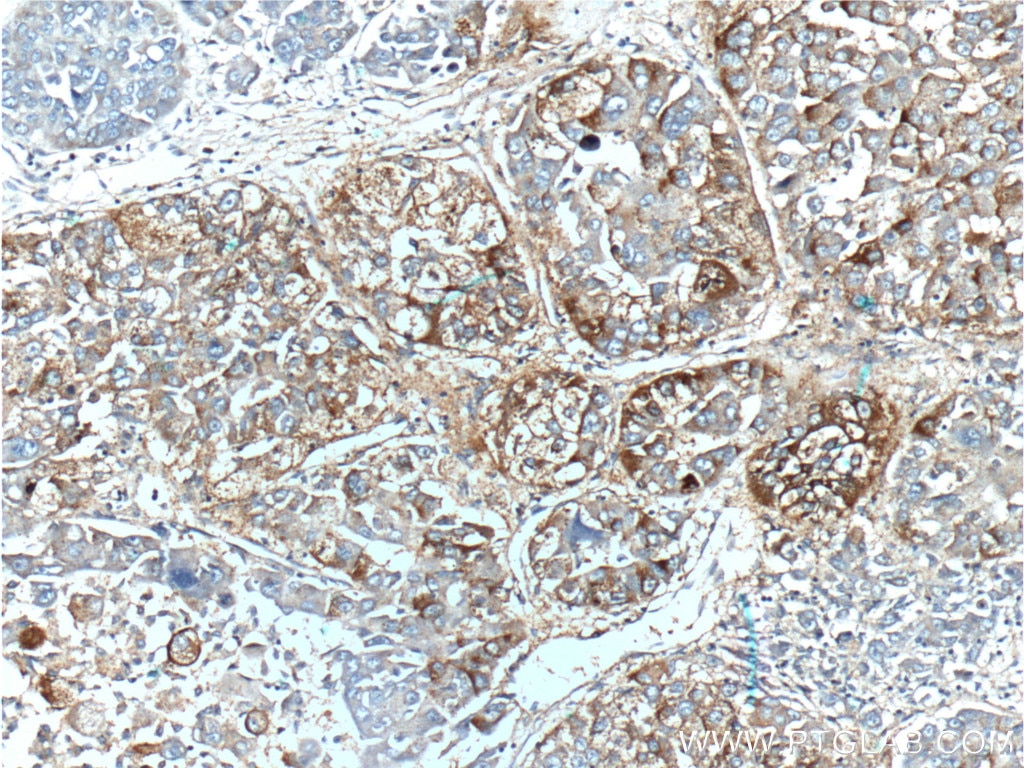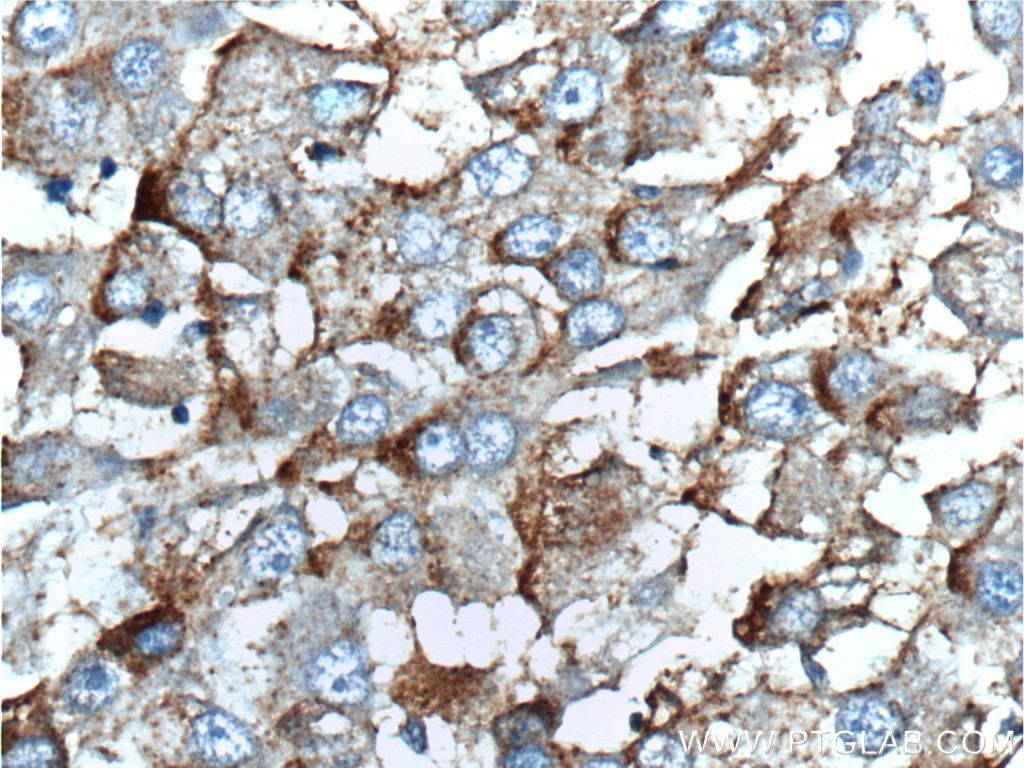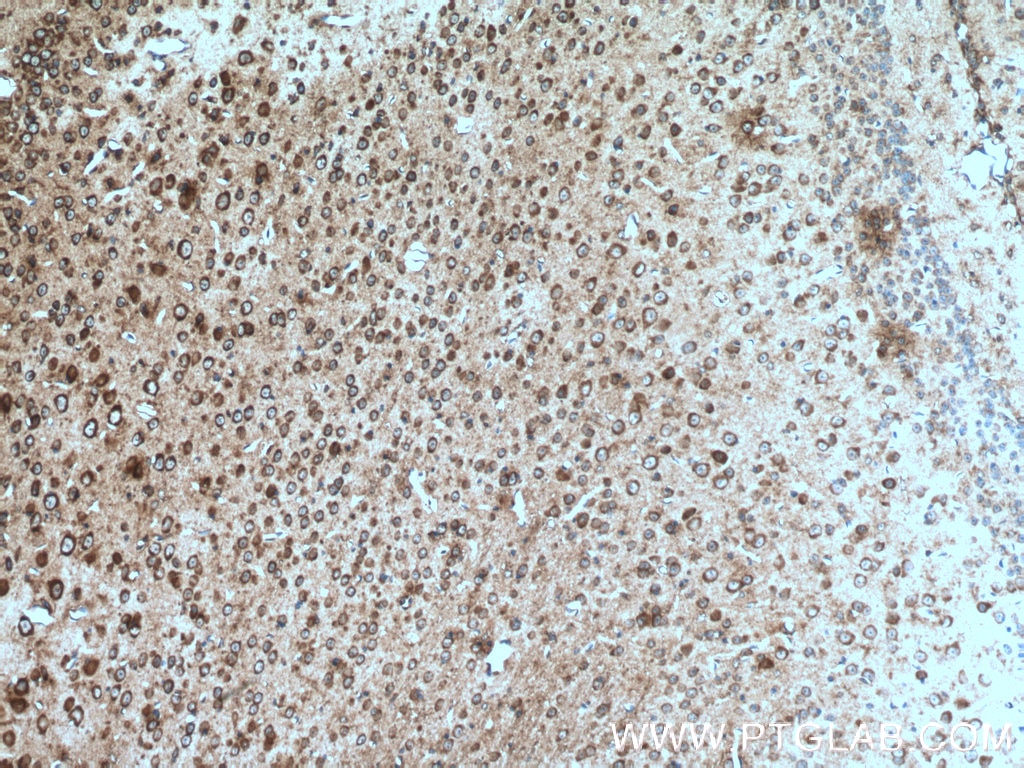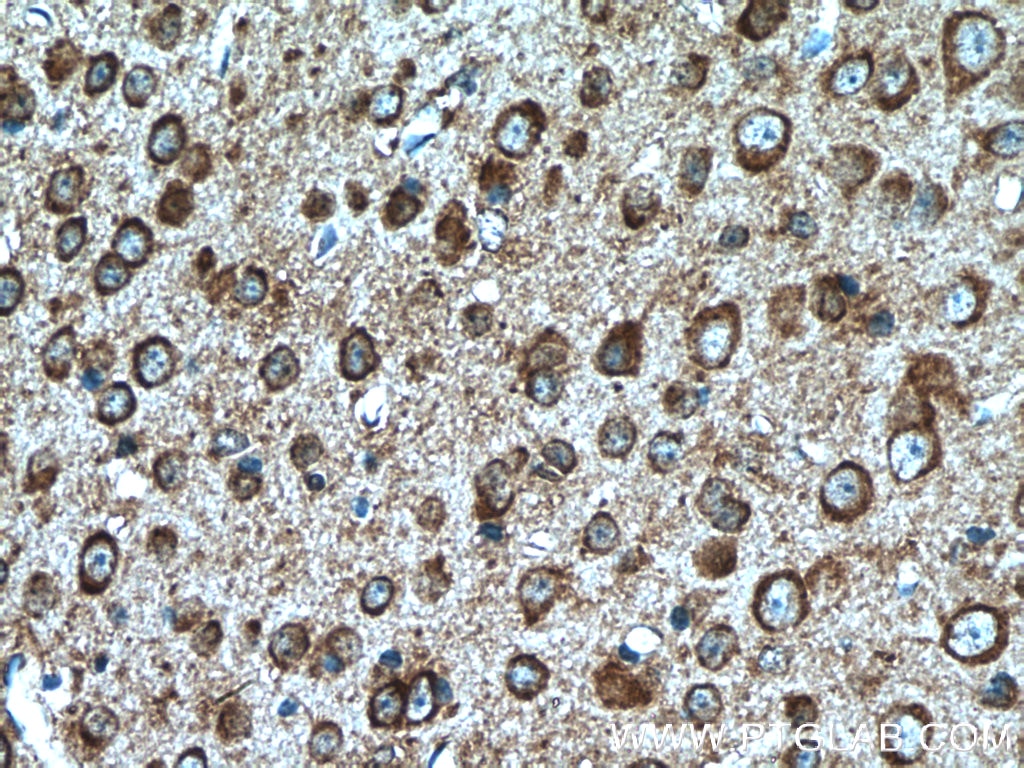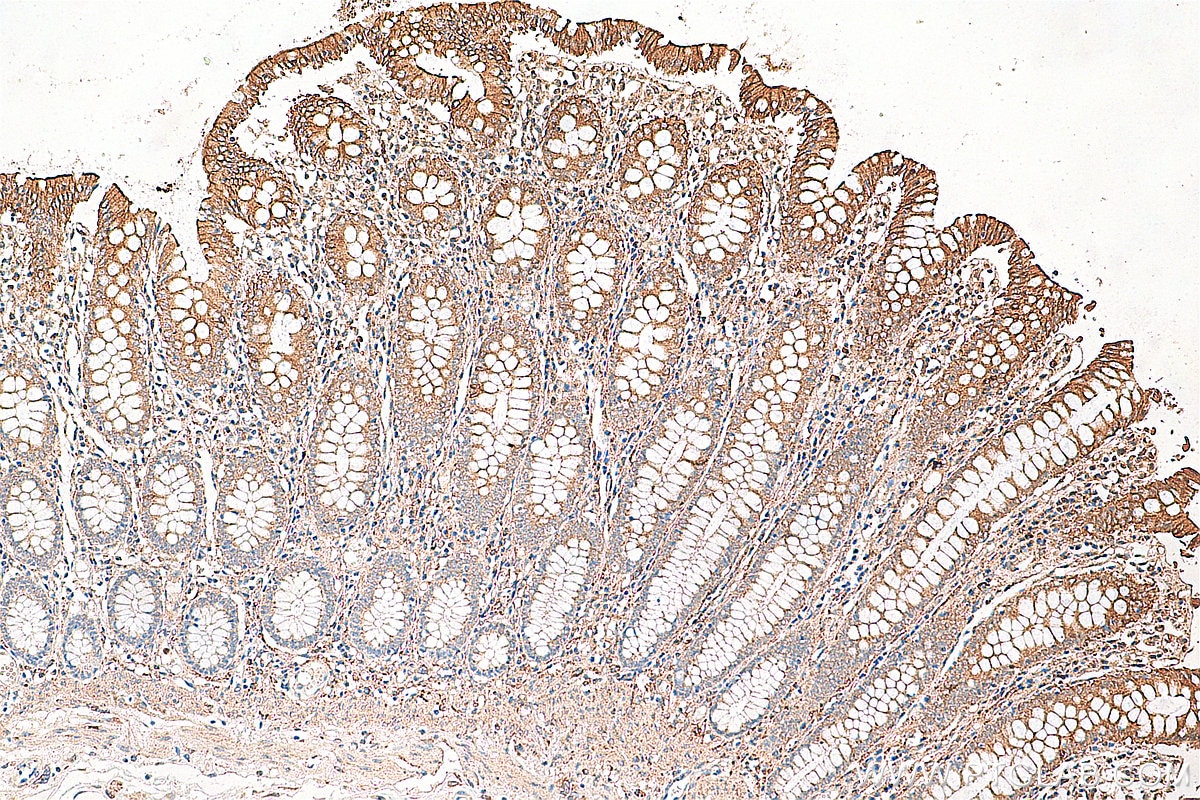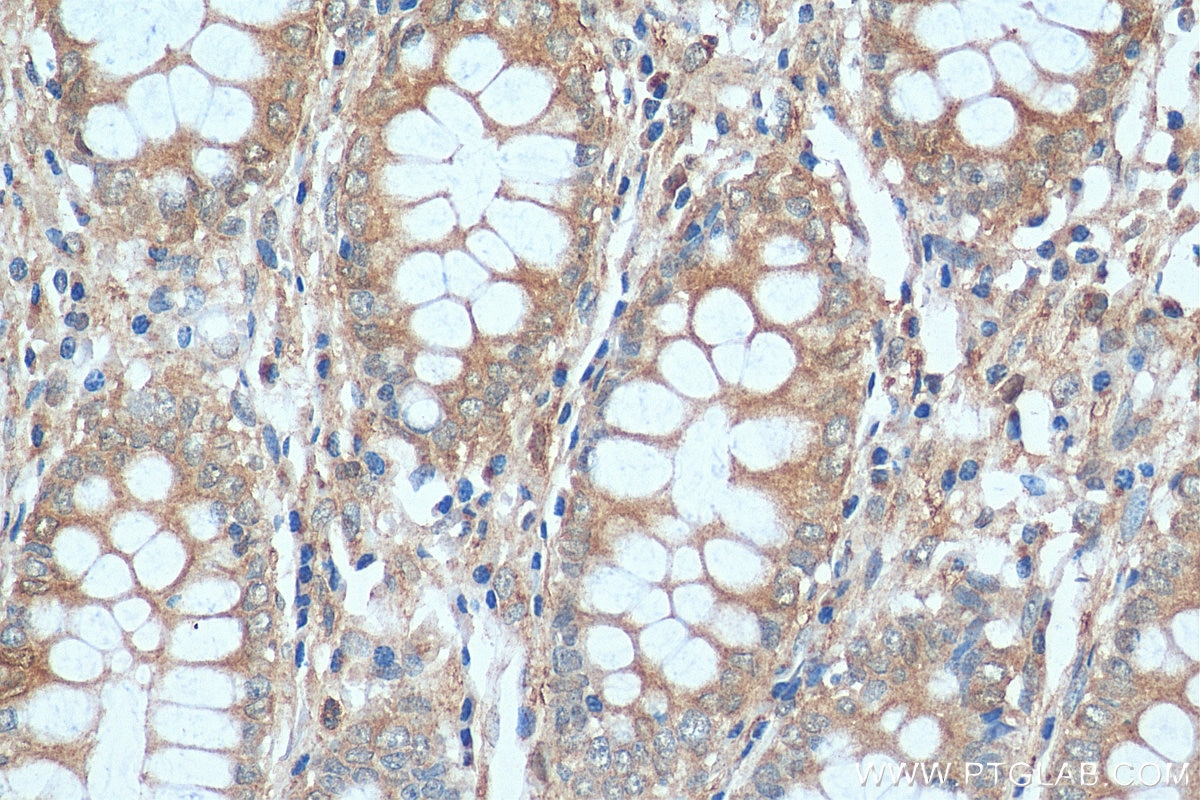- Featured Product
- KD/KO Validated
TLR4 Polyklonaler Antikörper
TLR4 Polyklonal Antikörper für WB, IHC, ELISA
Wirt / Isotyp
Kaninchen / IgG
Getestete Reaktivität
human, Maus, Ratte und mehr (7)
Anwendung
WB, IHC, IF, IP, CoIP, ChIP, ELISA, Microtiter plate binding assay
Konjugation
Unkonjugiert
Kat-Nr. : 19811-1-AP
Synonyme
Geprüfte Anwendungen
| Erfolgreiche Detektion in WB | Mauslebergewebe, NIH/3T3-Zellen, RAW 264.7-Zellen |
| Erfolgreiche Detektion in IHC | humanes Plazenta-Gewebe, humanes Kolongewebe, humanes Leberkarzinomgewebe, Maushirngewebe Hinweis: Antigendemaskierung mit TE-Puffer pH 9,0 empfohlen. (*) Wahlweise kann die Antigendemaskierung auch mit Citratpuffer pH 6,0 erfolgen. |
Empfohlene Verdünnung
| Anwendung | Verdünnung |
|---|---|
| Western Blot (WB) | WB : 1:1000-1:4000 |
| Immunhistochemie (IHC) | IHC : 1:100-1:400 |
| It is recommended that this reagent should be titrated in each testing system to obtain optimal results. | |
| Sample-dependent, check data in validation data gallery | |
Veröffentlichte Anwendungen
Produktinformation
19811-1-AP bindet in WB, IHC, IF, IP, CoIP, ChIP, ELISA, Microtiter plate binding assay TLR4 und zeigt Reaktivität mit human, Maus, Ratten
| Getestete Reaktivität | human, Maus, Ratte |
| In Publikationen genannte Reaktivität | human, Ente, hamster, Hausschwein, Huhn, Hund, Kaninchen, Maus, Ratte, Rind |
| Wirt / Isotyp | Kaninchen / IgG |
| Klonalität | Polyklonal |
| Typ | Antikörper |
| Immunogen | TLR4 fusion protein Ag13841 |
| Vollständiger Name | toll-like receptor 4 |
| Berechnetes Molekulargewicht | 839 aa, 96 kDa |
| Beobachtetes Molekulargewicht | 90-110 kDa |
| GenBank-Zugangsnummer | BC117422 |
| Gene symbol | TLR4 |
| Gene ID (NCBI) | 7099 |
| Konjugation | Unkonjugiert |
| Form | Liquid |
| Reinigungsmethode | Antigen-Affinitätsreinigung |
| Lagerungspuffer | PBS with 0.02% sodium azide and 50% glycerol |
| Lagerungsbedingungen | Bei -20°C lagern. Nach dem Versand ein Jahr lang stabil Aliquotieren ist bei -20oC Lagerung nicht notwendig. 20ul Größen enthalten 0,1% BSA. |
Hintergrundinformationen
TLR4, also named CD284, belongs to the Toll-like receptor family. TLR4 interacts with LY96 and CD14 to mediate the innate immune response to bacterial lipopolysaccharide (LPS). TLR4 acts via MYD88, TIRAP, and TRAF6, leading to NF-kB activation, cytokine secretion, and the inflammatory response. Three alternatively spliced transcript variants that encode different protein isoforms have been described. The calculated molecular weights of the three TLR4 isoforms are 96, 91, and 73 kDa.
Protokolle
| PRODUKTSPEZIFISCHE PROTOKOLLE | |
|---|---|
| WB protocol for TLR4 antibody 19811-1-AP | Protokoll herunterladen |
| IHC protocol for TLR4 antibody 19811-1-AP | Protokoll herunterladenl |
| STANDARD-PROTOKOLLE | |
|---|---|
| Klicken Sie hier, um unsere Standardprotokolle anzuzeigen |
Publikationen
| Species | Application | Title |
|---|---|---|
Adv Mater Biomimetic Immunosuppressive Exosomes that Inhibit Cytokine Storms Contribute to the Alleviation of Sepsis. | ||
Adv Sci (Weinh) Turmeric-Derived Nanoparticles Functionalized Aerogel Regulates Multicellular Networks to Promote Diabetic Wound Healing | ||
J Clin Invest Longistatin in tick saliva blocks advanced glycation end-product receptor activation. | ||
Gut Microbes Fusobacterium nucleatum promotes esophageal squamous cell carcinoma progression and chemoresistance by enhancing the secretion of chemotherapy-induced senescence-associated secretory phenotype via activation of DNA damage response pathway | ||
Nat Commun TLR4 signalling via Piezo1 engages and enhances the macrophage mediated host response during bacterial infection. | ||
Nat Commun Alarmin-painted exosomes elicit persistent antitumor immunity in large established tumors in mice.
|
Rezensionen
The reviews below have been submitted by verified Proteintech customers who received an incentive for providing their feedback.
FH Sara (Verified Customer) (10-25-2020) | B cells (mouse) were lysated in RIPA buffer with protein and phosphatase inhibitors. 10 µg of protein per lane were loaded in a 10% PAGE-SDS gel. Proteins were transferred to a PVFD membrane (Turbo Blot system) and incubated overnight with 1:1000 of anti-TLR4, followed by anti-rabbit-HRP (1:10.000) on the next day. Two bands of around 70 kDa are detected.
 |
